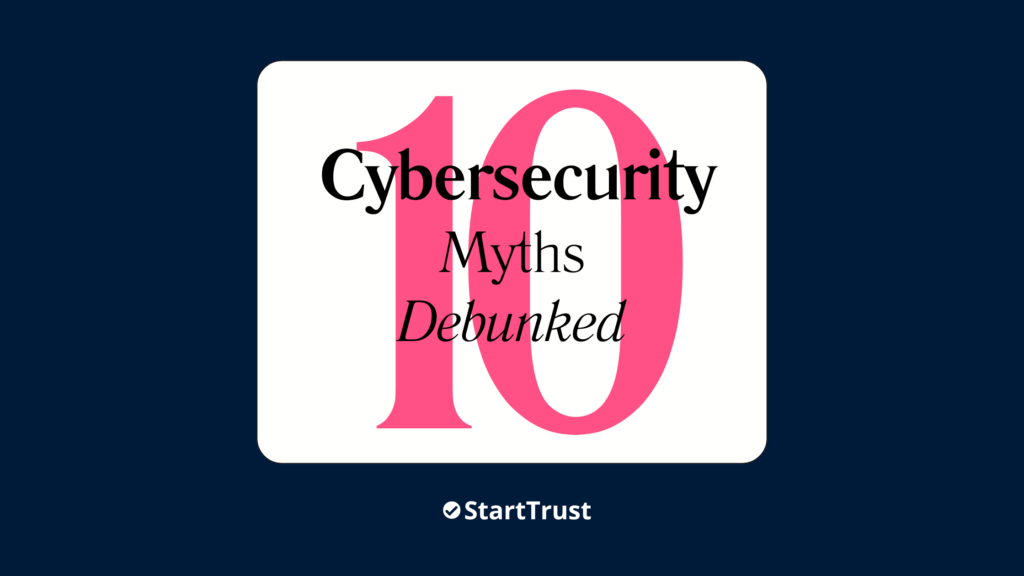
Understanding and debunking cybersecurity myths is crucial for staying safe online. By recognizing that cybersecurity is a shared responsibility, using more than just antivirus software, and staying vigilant against both internal and external threats, you can significantly enhance your security posture.
Let’s clear up the confusion and strengthen your cybersecurity knowledge!
Myth 1 – Cybersecurity is Only an IT Issue
Truth: Cybersecurity is a company-wide responsibility. Every employee, from the C-suite to entry level, has a role in maintaining security. Awareness and training are crucial to prevent human error, one of the leading causes of breaches.
Myth 2 – Antivirus Software is enough.
Truth: While antivirus software is essential, it’s not sufficient on its own. A comprehensive security strategy includes firewalls, intrusion detection systems, regular software updates, and employee training to cover all potential vulnerabilities.
Myth 3 – Small Business Aren’t Targeted.
Truth: Small businesses are often targeted because they may have weaker security measures. According to various reports, a significant percentage of cyber attacks target small and medium-sized enterprises (SMEs).
Myth 4 – Strong Passwords are Enough
Truth: Even the strongest passwords can be compromised through phishing attacks or data breaches. Using multi-factor authentication (MFA) adds an extra layer of security, making it harder for attackers to gain access.
Myth 5 – Cybersecurity is Too Expensive
Truth: Investing in cybersecurity can save money in the long run by preventing costly breaches. Many affordable solutions, like basic firewalls, antivirus programs, and employee training, can significantly enhance security.
Myth 6 – Macs Don’t Get Viruses
Truth: While Macs have historically been less targeted than Windows PCs, they are not immune to malware. Mac users should still use antivirus software and follow good security practices.
Myth 7 – Once We’re Secure, We’re Always Secure
Truth: Cybersecurity is an ongoing process. Threats evolve, and new vulnerabilities emerge. Regularly updating software, reviewing security policies, and conducting penetration tests are crucial for maintaining security.
Myth 8 – Cyber Threats are Always External
Truth: Insider threats, whether from malicious intent or careless behavior, pose a significant risk. Implementing access controls, monitoring employee activity, and fostering a security-conscious culture are key to mitigating this risk.
Myth 9 – Cybersecurity Only Concerns Digital Data
Truth: Physical security also plays a role in cybersecurity. Ensuring that servers are in secure locations, sensitive documents are properly stored or shredded, and access to critical areas is controlled is essential.
Myth 10 – You Can Tell if Your Computer is Infected
Truth: Modern malware is designed to be stealthy. Infections can go unnoticed for long periods, making it vital to use comprehensive security solutions that include real-time scanning and behavior analysis to detect and respond to threats.
Remember, cybersecurity is an ongoing process that requires continuous attention and adaptation. Stay informed, stay proactive, and protect your digital assets from ever-evolving threats.